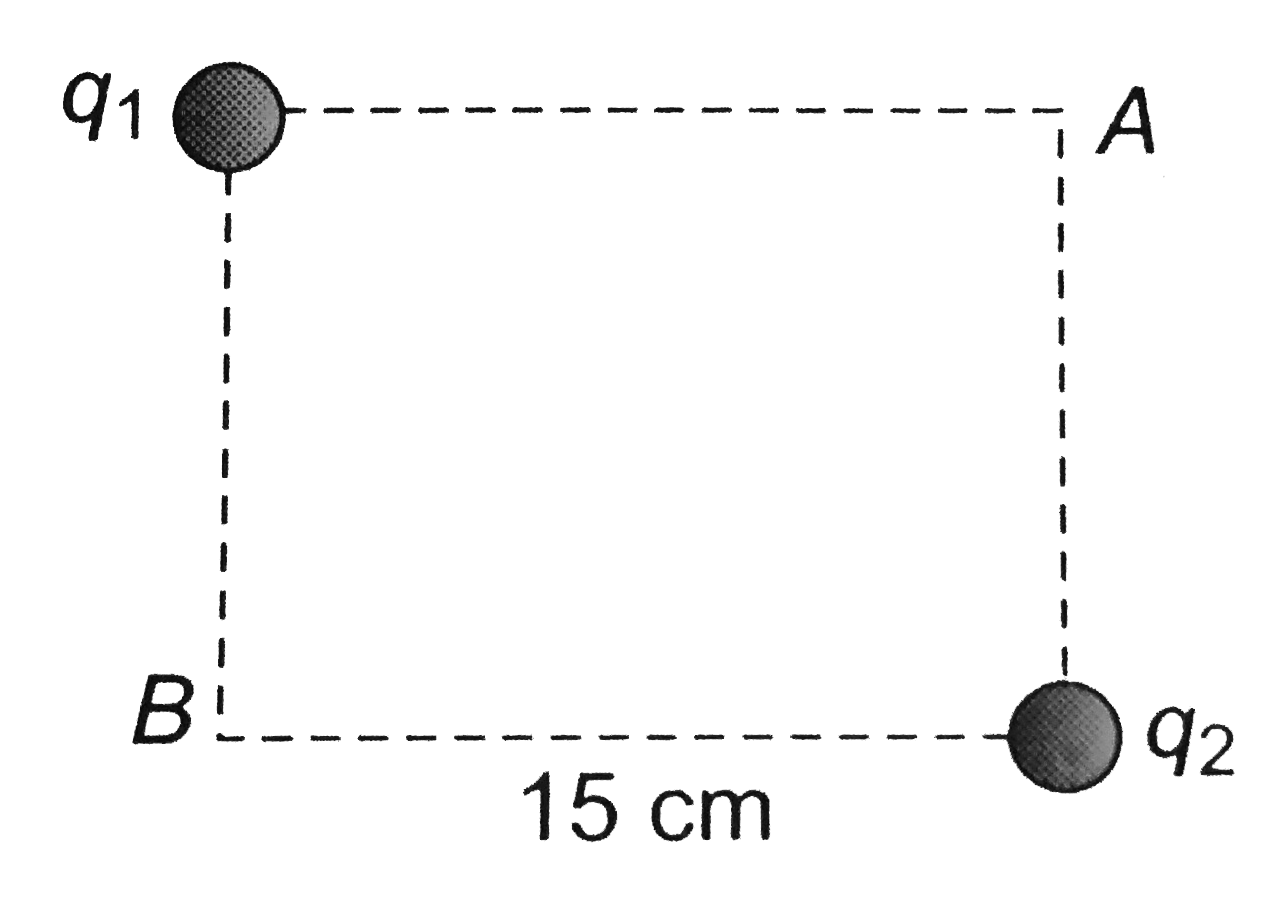In the rectangle of Fig. 24-64, the sides have lengths 5.0 cm and 15 cm, q=−5.0μC,andq2=+2.0μC. With V=0 at infinity, what is the electric potential at (a) corner A and (b) comer B? ( c) How much work is required to move a charge q3=−2.0μC from B to A along a diagonal of the rectangle? (d) Does this work increase or decrease the electric potential energy of the three-charge system? Is more, less, or the same work required if q3 is moved along a path that is ( e) inside the rectangle but not on a diagonal and (f) outside the rectangle?

(a) +6.0×104V, (b) −7.8×105 V, (c ) −1.7 J, (d) decreases (e ) same, (f ) same
Topper's Solved these Questions
- ELECTRIC POTENTIALBook:RESNICK AND HALLIDAYChapter:ELECTRIC POTENTIALExercise:(PRACTICE QUESTIONS) Single Correct Choice Type
Explore 21 Videos
- ELECTRIC POTENTIALBook:RESNICK AND HALLIDAYChapter:ELECTRIC POTENTIALExercise:(PRACTICE QUESTIONS) More than One Correct Choice Type
Explore 8 Videos
- ELECTRIC POTENTIALBook:RESNICK AND HALLIDAYChapter:ELECTRIC POTENTIALExercise:CHECKPOINT
Explore 6 Videos
- ELECTRIC CHARGES AND FIELDSBook:RESNICK AND HALLIDAYChapter:ELECTRIC CHARGES AND FIELDSExercise:Practice Questions (Integer Type )
Explore 3 Videos
- ELECTROMAGNETIC INDUCTIONBook:RESNICK AND HALLIDAYChapter:ELECTROMAGNETIC INDUCTIONExercise:PRACTICE QUESTIONS (Integer Type)
Explore 14 Videos
Similar Questions
Knowledge Check
Point charge q1=2μC and q2=−1μC are kept at points x=0 and x=6 respectively. Electrical potential will be zero at points
Ax=2andx=9Bx=1andx=5Cx=4andx=12Dx=−2andx=2In the rectangle, shown below, the two corners have charges q1=−5μC and q2=+2.0μC. The work done in moving a charge +3.0μC from B to A is (take 1/4πε0=1010N−m2/C2)
 A2.8JB3.5JC4.5JD5.5J
A2.8JB3.5JC4.5JD5.5J
Point charges q1=4 μC and q2 = -2 μC are kept at point x = 0 and x = 4 respectively , electrical potential will be zero at points (where x is in cm)
View SolutionPoint charge q1=2μC and q2=−1μC are kept at points x=0 and x=6 respectively. Electrical potential will be zero at points
View SolutionTwo point charge - 5μC and + 3μC are placed 64 cm apart. At what points on the line joining the two charges is the electric potential zero. Assume the potential at infinity to be zero.
View SolutionTwo point charge - 5μC and + 3μC are placed 64 cm apart. At what points on the line joining the two charges is the electric potential zero. Assume the potential at infinity to be zero.
View SolutionDetermine the potential at a point 0.50 m (i) from a+20μC potential charge (ii) from a−20μC point charge.
View SolutionIn the rectangle, shown below, the two corners have charges q1=−5μC and q2=+2.0μC. The work done in moving a charge +3.0μC from B→A is (take 1/44πε0=1010N−m2/C2)

View Solution

